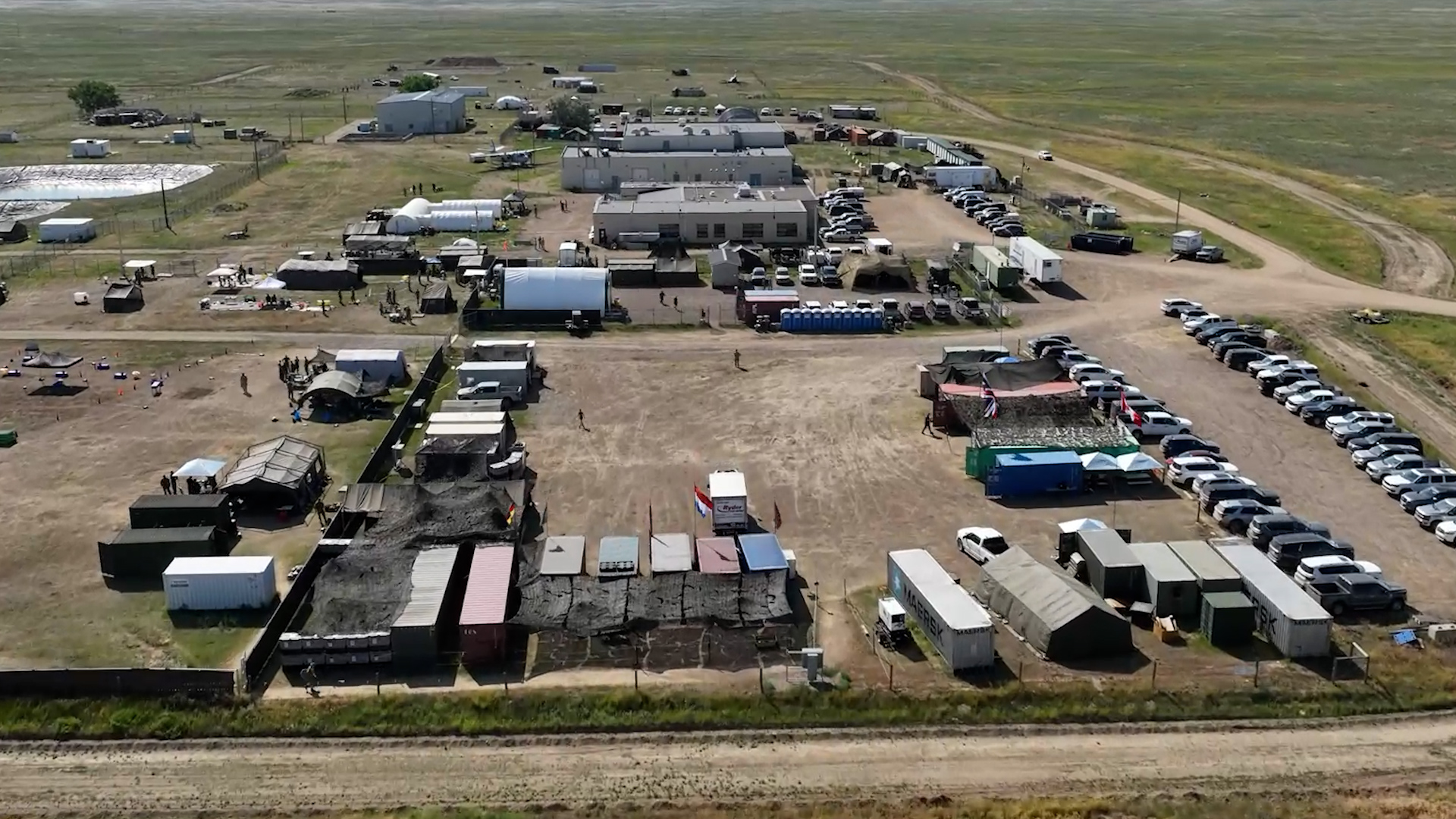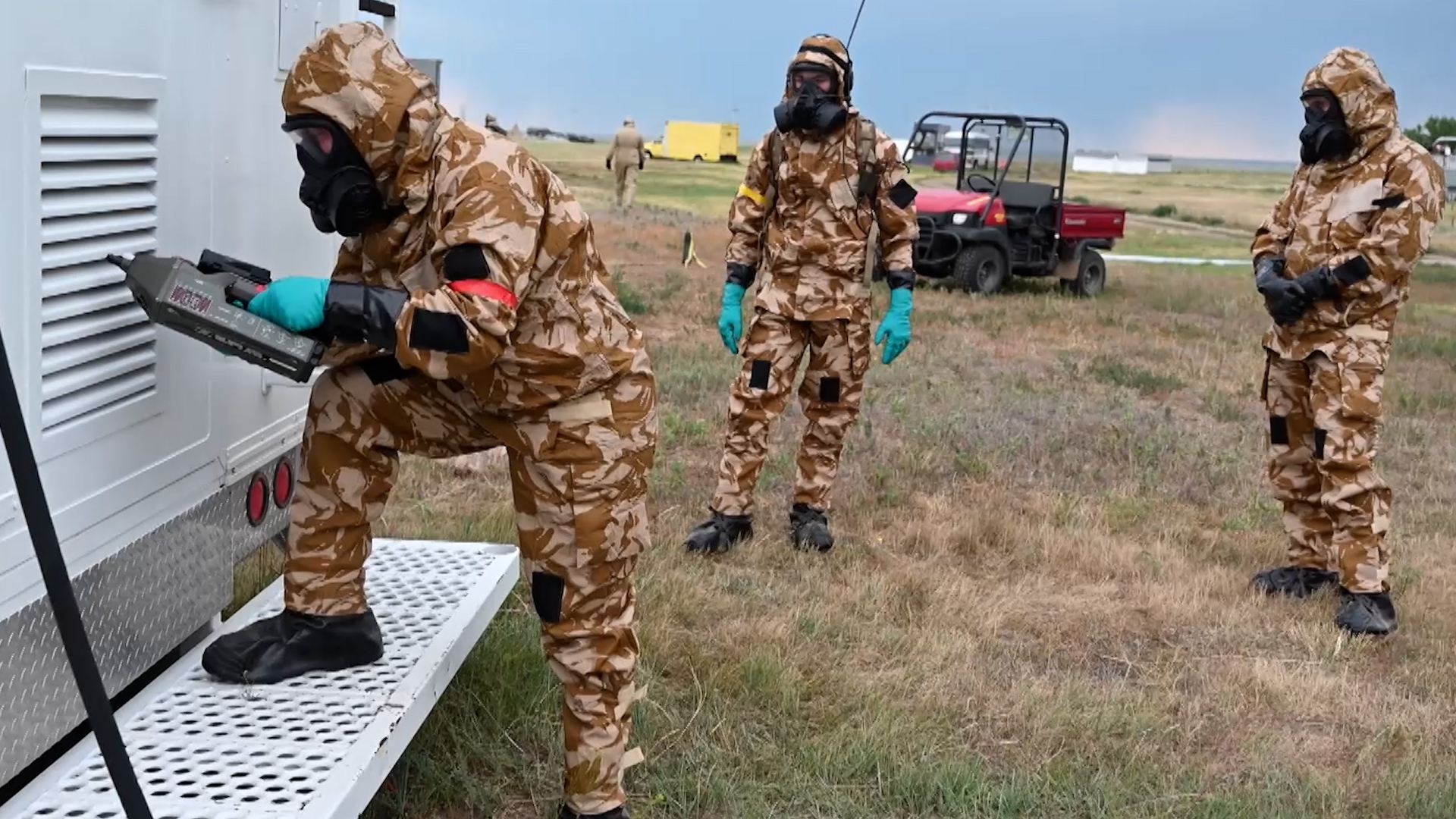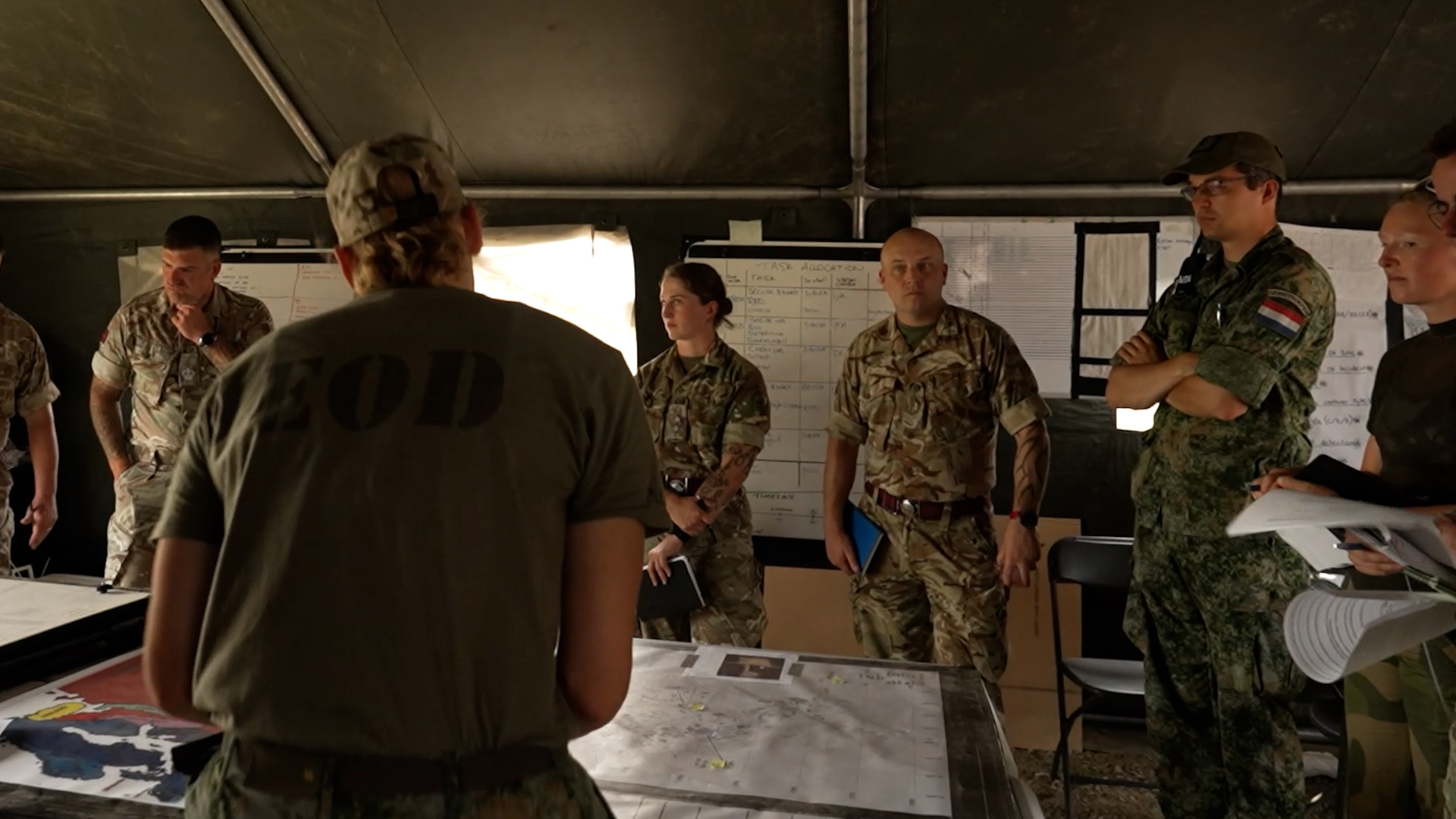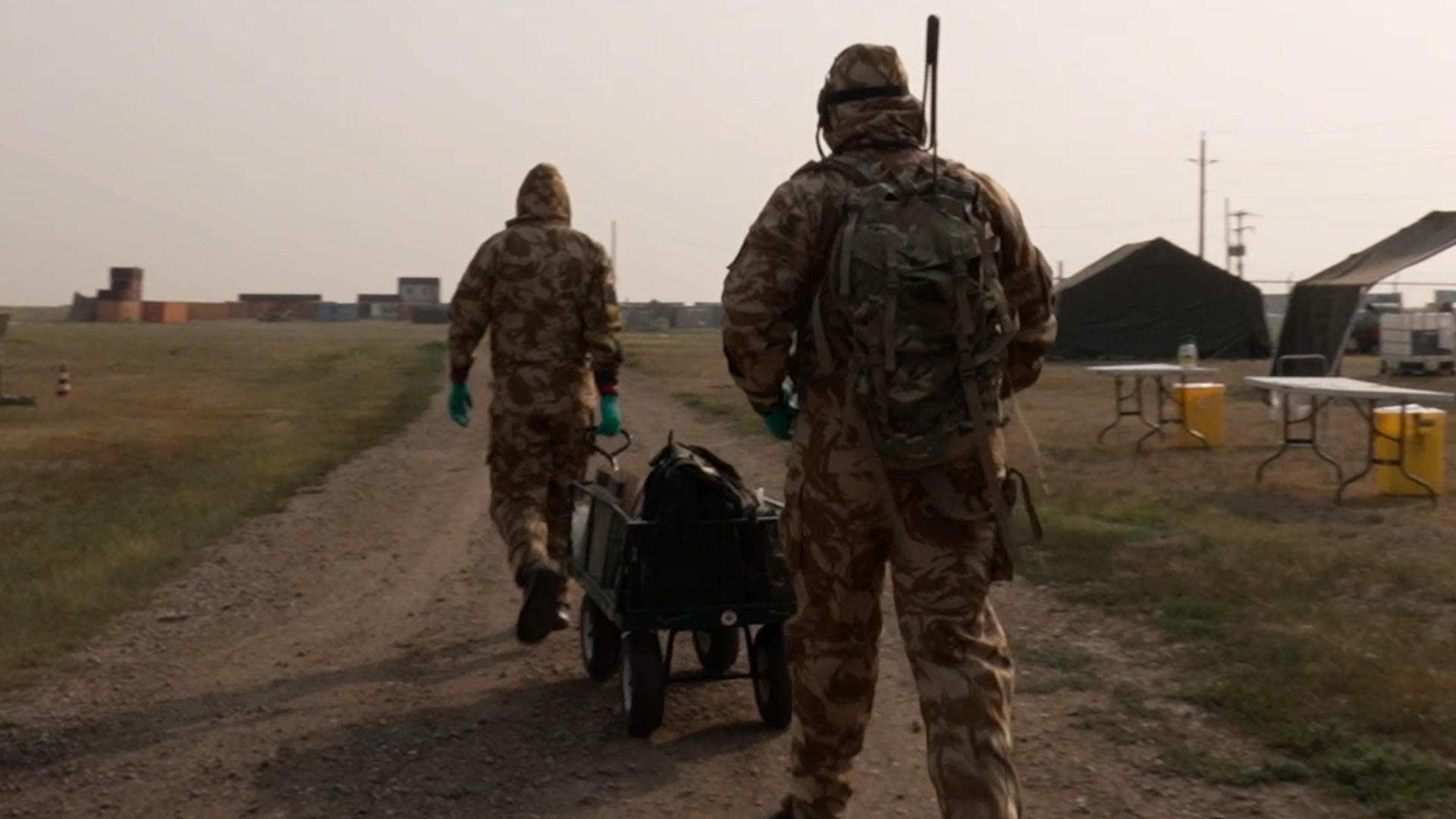Facing the invisible enemy: How Nato troops deal with deadly substances
The need to defend against CBRN (chemical, biological, radiological and nuclear) warfare threats has fluctuated over the decades.
Today the threat is increasingly real and annual training exercises using live agents are crucial to prepare a battalion in the best possible way.
In 2002, at a summit in Prague, Nato's CBRN Defence Battalion was born – the high-readiness, multi-national force giving Nato allies a credible CBRN capability.
BFBS Forces News travelled to the Canadian province of Alberta, 20 years since the first Exercise Precise Response was held there.
It's an annual training exercise using live agents to find out how troops prepare to defend against an invisible enemy.
Western Alberta is home to all things CBRN in Canada.
The training area on the prairie is huge. At 2,800 sq km, it is larger than Luxembourg, and flat as far as the eye can see.
It is one of the few places in the world where troops can practise using live chemical, biological and radiological agents.

The UK can do it at the Defence Science and Technology Laboratory (Dstl) Porton Down, although it is hugely expensive.
However, many Nato countries have no such facility, so this exercise is crucial.
The Canadian Forces Base in Suffield is inspected by the Organization for the Prohibition of Chemical Weapons and approved to make and hold agents to use for training.
28 Engineer Regiment – which includes 77 Field Squadron – are the CBRN specialists in the British Army, a small but crucial niche.
Each day of the exercise is packed with scenarios with the orders coming in the night before.
For the first time this year, the British are leading one of the three task forces, Task Force Buffalo, jointly with the US.

Major Adam Irvine, Officer Commanding, 77 Field Squadron, explained to BFBS Forces News the extent of the challenges they face on the exercise.
"We're working with several nations. So we've got Belgium, Canada, Netherlands, Germany, and Italy and the UK, underneath our task force headquarters."
He added: "We've got a number of CBRN tasks. We've got a chemical lab to look into the radiation area to recce and then a biological lab to explore as well.
"And on top of that, we've got an EOD (explosive ordnance disposal) threat, which we've got a pair of EOD operators from the Netherlands to exploit that activity."
The EOD brings another layer of complexity to a CBRN situation if, for example, the troops are faced with a dirty bomb.

When it is time to cross the line into the hot zone, the exercise ramps up.
"With a live agent you're more curious and careful about your drills," said Sapper Connor Hill, 77 Field Squadron
He added: "You're paying more attention and making sure you're staying as clean as possible."
This is all whilst facing temperatures of around 40°C in heavy suits.
On the heat, the sapper said: "You can't breathe. Your breathing feels different, you feel sweaty, and you lose a lot of dexterity in your hands because of how many gloves you wear."
Each country has requested specific training elements be included. The Canadian scenario team work these in, constantly throwing curve balls into the mix, to prepare the troops for any eventuality.

Throughout the exercise, safety staff watch intensely, keeping checks on things that become contaminated.
Anything that comes into contact with a chemical agent is incinerated, anything that touches a biological agent is washed in an autoclave – effectively a giant pressure cooker and things affected by radiation are quarantined – until enough nuclei have decayed to bring them down to safe levels of background radiation.
"To be honest it's been a great training serial," said Major Adam Irvine. "CBRN is quite a niche capability within defence.
"To be able to see what the other nations are doing, what equipment they're using particularly, is quite key for us.
"I think it's almost a forgotten art how we operate in a CBRN environment, we need to be on top of that."
Lieutenant Colonel Trevor Waaga, the exercise director, does not think that many people know much about CBRN, except "just what they see in the movies".
"Potentially also the things they see through history, Chernobyl, Hiroshima, the Anthrax letters after 9/11," he said.
However, he emphasised how "everything changes so quickly".
"Depending on what our adversaries are working on, and what their intents are, we have to be ready for any eventuality," he added.









